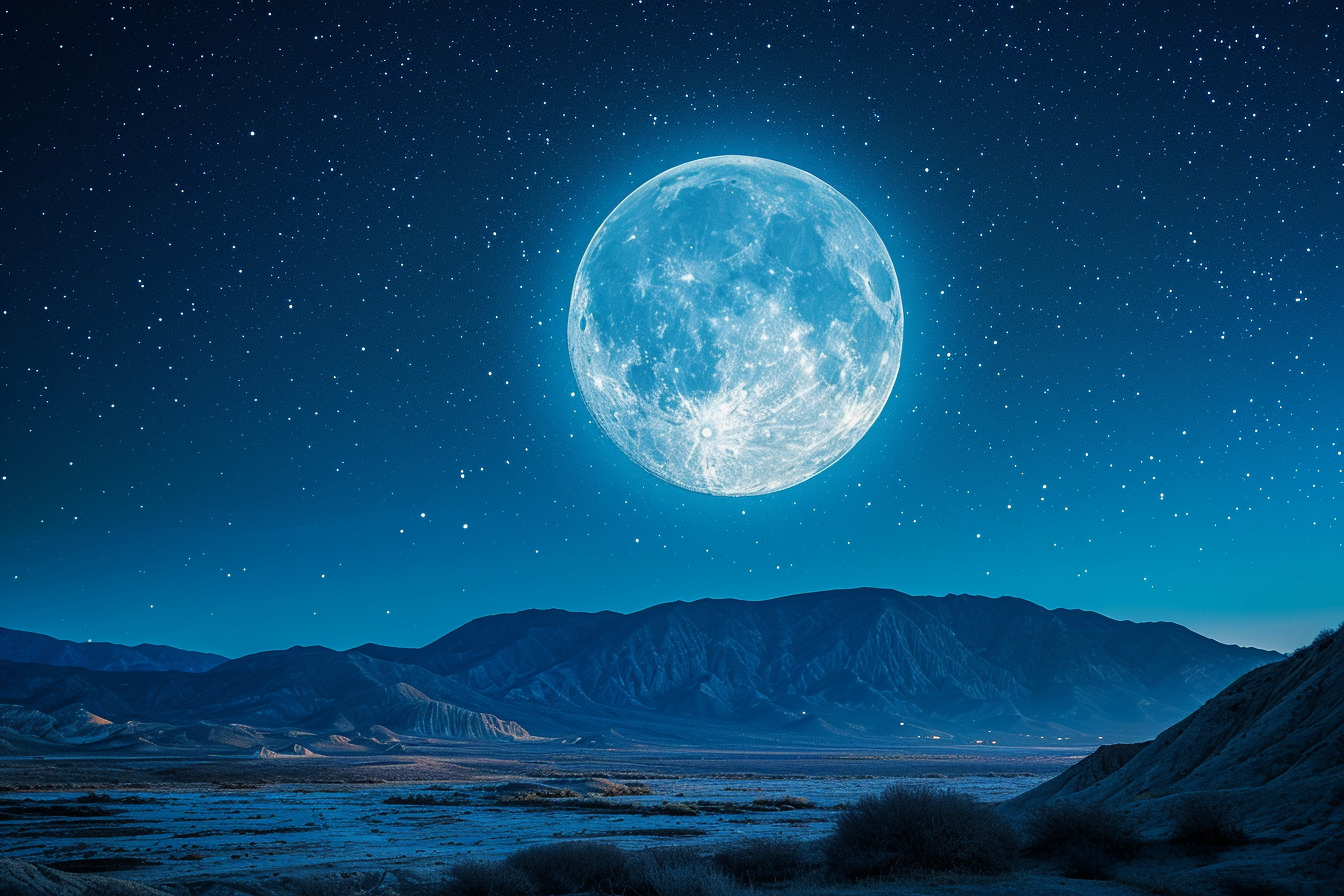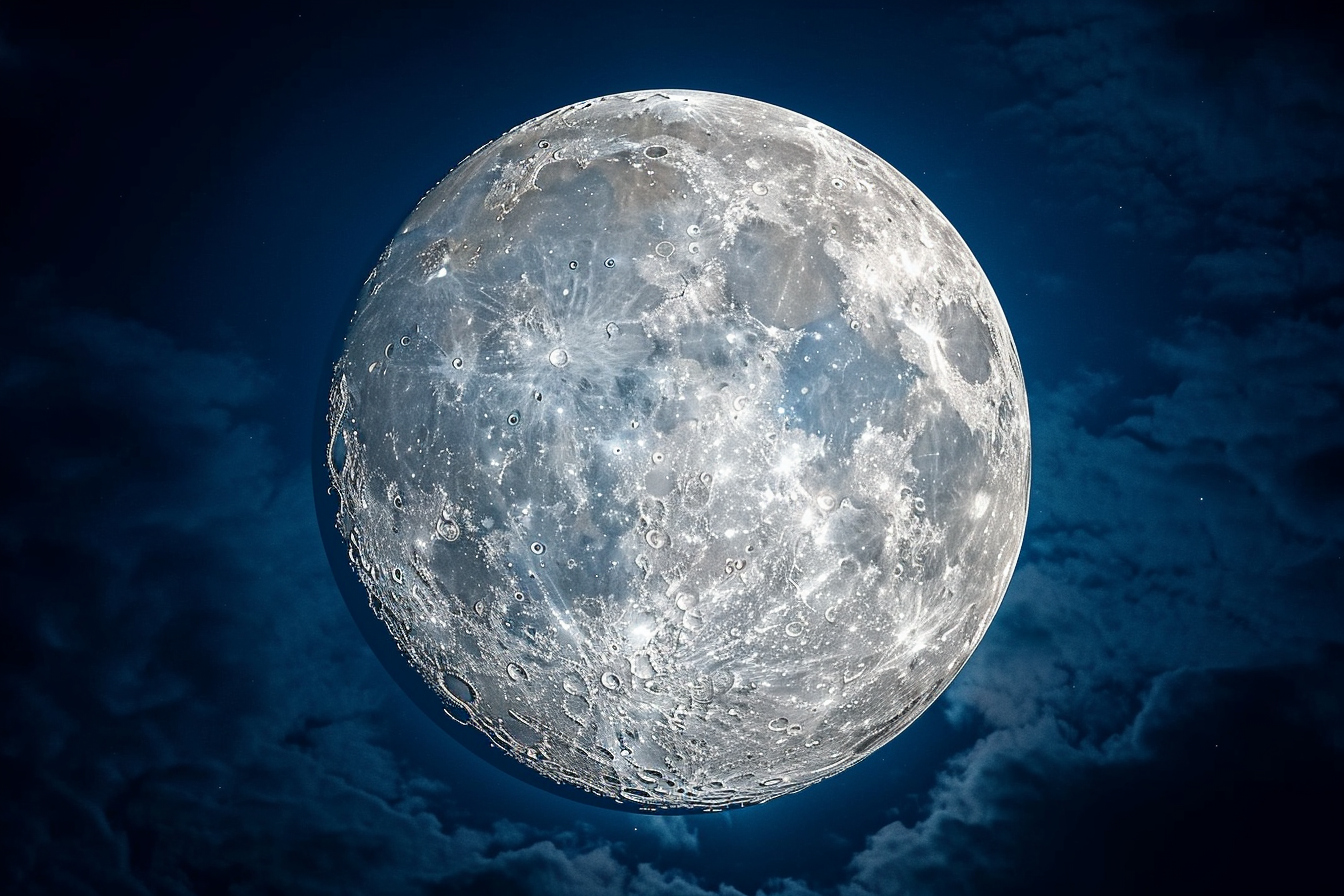The Moon, this natural satellite which has accompanied the Earth for billions of years, has fascinated humanity throughout the ages. Majestic and mysterious, it illuminates our nights and inspires poets, artists, scientists and dreamers. But where does this shine that is so familiar to us come from?
The origin of the lunar glow
The Moon does not produce its own light, contrary to what the eye might lead us to believe. It is the sun which is responsible for the lunar glow. The sun’s rays strike the lunar surface and are reflected to reach our view from Earth. Let’s take a closer look at this phenomenon.
Reflection of sunlight
When the sun’s light beams hit the lunar surface, they encounter a topography rich in mountains, craters and plains. Depending on the materials present and the constitution of the lunar soil, the light is reflected more or less intensely. This reflection is what makes the Moon visible in our night sky.
A unique lunar soil
The surface of the Moon is covered in regolith, a layer of dust and rock created by billions of years of meteorite impacts. This layer has special properties that influence how light is reflected. Tiny particles called nanophase iron, present in this regolith, help give the Moon its characteristic glow.
Lunar phases and their impact on radiance
Throughout the lunar month, which lasts approximately 29.5 Earth days, we observe different phases of the Moon, each modifying the amount of light reaching us from our natural satellite.
New Moon
During this phase, the Moon is between the Earth and the Sun. The illuminated side is then turned towards the latter and is invisible from our perspective. The lunar glow is then at its minimum.
First and last quarter
At these times of the lunar cycle, half of the visible side is illuminated. We observe a distinct division between the bright hemisphere and the one plunged into shadow, which gives the impression of a semi-circle shape.
Full moon
It’s the moment of splendor for the lunar radiance. Earth’s position is between the Moon and the Sun, with the fully illuminated side of the Moon facing us. It then seems to shine with a thousand lights in the celestial vault.
Variations in the light intensity of the moon

Not only do phases influence lunar light, but other factors also play a role.
The angle of reflection
Solar radiation is not reflected uniformly by the lunar surface. The angle of incidence of sunlight causes a variation in the intensity of the glow. During a full moon, this incidence is perpendicular, maximizing reflection towards the Earth.
Earth’s atmosphere
Lunar light must pass through the Earth’s atmosphere to reach our eyes. This layer of air acts as a filter, dispersing certain wavelengths of light. This phenomenon is particularly visible when the Moon is close to the horizon, sometimes taking on a reddish tint.
Lunar eclipses
During a lunar eclipse, the Earth comes between the Sun and the Moon. Sunlight, passing through the Earth’s atmosphere, is deflected and tinted red before reaching the Moon. This is what gives the eclipsed Moon its copper color.
Reflection according to the type of surface
Lunar seas and highlands
The Moon has a varied geography, with “seas”, vast darker expanses that we actually call basins filled with solidified lava, contrasting with the lighter “lands”, or lunar high plateaus. These differences in composition and texture influence the distribution and intensity of light reflection.
Craters and radiation
The craters of the Moon, formed by the incessant bombardment of meteorites, play a role in the lunar glow. Their walls can eclipse or diffuse the light, contributing to the sparkling effect that we sometimes perceive.
Scientific measurements of lunar brightness
Space missions like the Lunar Reconnaissance Orbiter (LRO) probes carry out careful observations of the Moon. These instruments measure the albedo, or reflective power, of the Moon to better understand the distribution of light on its surface.
The role of albedo
Albedo is defined as the ratio between the light reflected by a body and that it receives. On the Moon, this albedo varies considerably, depending on the region observed and the geological characteristics of the location.
The impact of the moon on our planet
Tide regulator
The gravitational influence of the Moon on the Earth no longer needs to be proven. Its tidal forces regulate the oceans and play a determining role in marine ecosystems.
Biological synchronization
Many animal and plant species have developed synchronization with the lunar cycle. Some plants, for example, depend on lunar phases to regulate the time of their flowering.
The moon in culture
Beyond its brilliance, the Moon is an inexhaustible source of inspiration. Literature, music, cinema and the visual arts have repeatedly appropriated the image of the Moon to make it a muse, a symbol of romanticism, mystery or even change.
Symbol in myths and legends
Ancient civilizations developed a rich mythology around the Earth’s satellite, attributing to it powers and influence on human destiny. She has always been perceived as a divinity or a central character in numerous cultural and religious narratives.
Future prospects
Exploration and colonization
The possibility of future lunar colonies and exploration missions raises its share of questions about the impact of human activity on the lunar glow. Installations on the Moon could ultimately modify its reflection of sunlight.
Scientific Research
There are numerous projects for advanced study of the Moon. In addition to deepening our understanding of the lunar glow, this research could also shed light on the history of our solar system and the formation of the Earth.
The Moon continues to exert a fascinating attraction, not only for its beauty but also for the mysteries it contains. As science advances, our understanding of this natural satellite is refined, providing ever more answers and, invariably, exciting new questions to explore. Throughout its eternal cycle, the Moon continues to light our nights and nourish the human imagination. Its history, inseparably linked to ours, is still rich in unexplored potential. The future will tell us what new chapter humanity will write with this lifelong companion.












